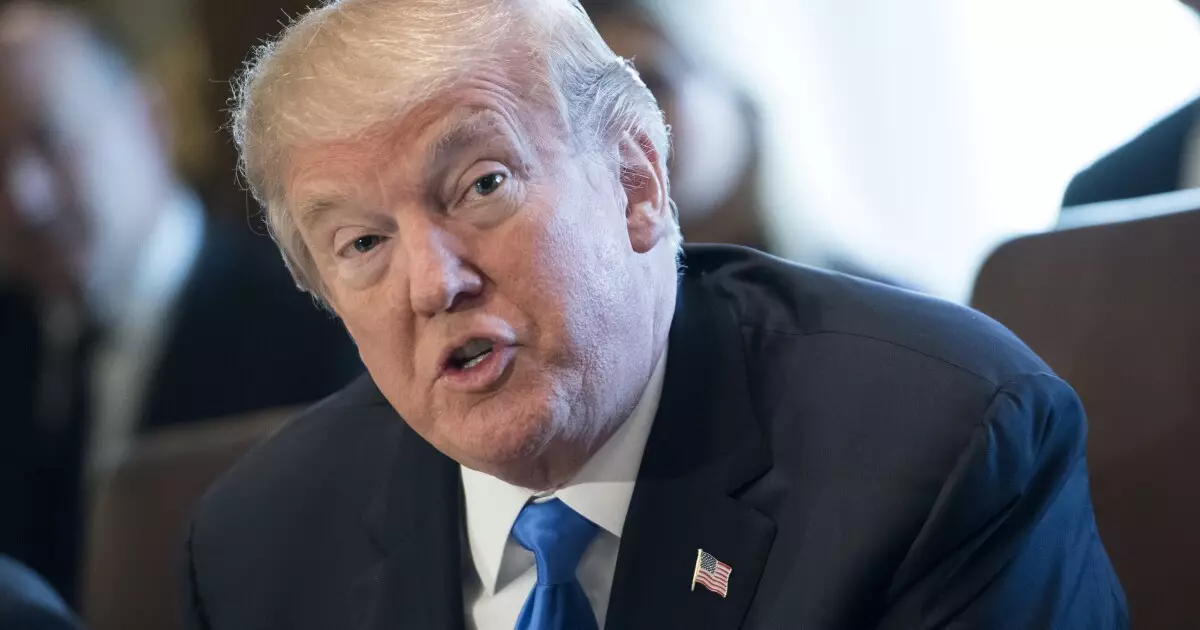In a striking declaration via his Truth Social platform, former President Donald Trump has put his weight behind the notion of lifting the cap on the State and Local Tax (SALT) deduction. This announcement has gained traction among municipal bond issuers, particularly in light of the cap’s adverse effects on their funding landscape. Trump vowed to “bring New York back to levels it hasn’t seen for 50 years,” an ambitious undertaking that has captured the interest of both supporters and skeptics alike. This move strategically coincides with a rally in Long Island, an area where the cap’s unpopularity runs deep, hinting at his desire to resonate with voters while reigniting political dialogues in crucial battlegrounds.
The SALT deduction has been a contentious issue since its limitation under the Tax Cuts and Jobs Act of 2017 — arguably one of the hallmark achievements of Trump’s presidency. Critics have long argued that such limitations disproportionately affect residents in high-tax states like New York, exacerbating their financial burdens. With this renewed focus from Trump, questions arise regarding whether this is a sincere effort to correct past legislative errors or simply a tactic to gain favor in tight congressional races.
Experts in municipal finance, including Emily Brock from the Government Finance Officers Association, believe that Trump’s proclamation could serve as a catalyst for renewed bipartisan discussions. Although recent attempts by Republicans on Long Island to work across party lines to eliminate the cap have been largely futile, this newfound attention from Trump could reinvigorate the dialogue. Brock’s assertion that this “tiny mention” might propel the conversation forward is noteworthy; it highlights the importance of political momentum in addressing complex tax reform issues.
The reality, however, is painted with skepticism. Observers note that bipartisan efforts often stall due to underlying divergences in party priorities. Simply put, while many stakeholders desire to overhaul the SALT cap, the lack of a coherent strategy on how to offset the financial implications leaves discussions in limbo.
Jumping into the numbers reveals a daunting fiscal landscape. The Tax Foundation estimates that increasing the SALT deduction limit for couples who earn less than $500,000 in adjusted gross income could cost the federal government approximately $11.7 billion annually. Even more concerning is the projected cost of $25.5 billion over the following two years if extended to 2024 and 2025. The concept of lifting this cap emerges not only as a value proposition for residents but also as a high-stakes financial maneuver in political negotiations surrounding the broader implications of the Tax Cuts and Jobs Act (TCJA).
Brett Bolton from the Bond Dealers of America stresses that easing the SALT deduction cap is an “expensive chip” in budget discussions. With a potential long-term cost of over a trillion dollars within a 10-year window, there arises an urgent question: how will the costs be offset? Without a clear funding mechanism, the prospect of lifting the cap could become an unmanageable burden on federal resources.
As Trump’s words reverberate throughout the political sphere, the implications of his endorsement on the SALT cap provide fertile ground for analysis. Are these merely empty promises aimed at securing electoral favor, or do they hint at tangible changes in fiscal policy? Regardless, it is clear that Trump’s assertion has revived a contentious debate already fraught with complexities.
Should he pursue this issue earnestly, collaboration with Democratic leaders and local officials could pave the way for legislating change. On the other hand, if this is primarily a rhetorical strategy to capture swing voters, it may ultimately fizzle out in the maze of partisan politics and budgetary constraints.
While lifting the SALT deduction cap may appear beneficial, the intricacies of its implementation pose significant challenges. The coming months will reveal whether Trump’s intervention leads to meaningful progress or merely serves as a blip on the political radar amid persistent fiscal dilemmas.

